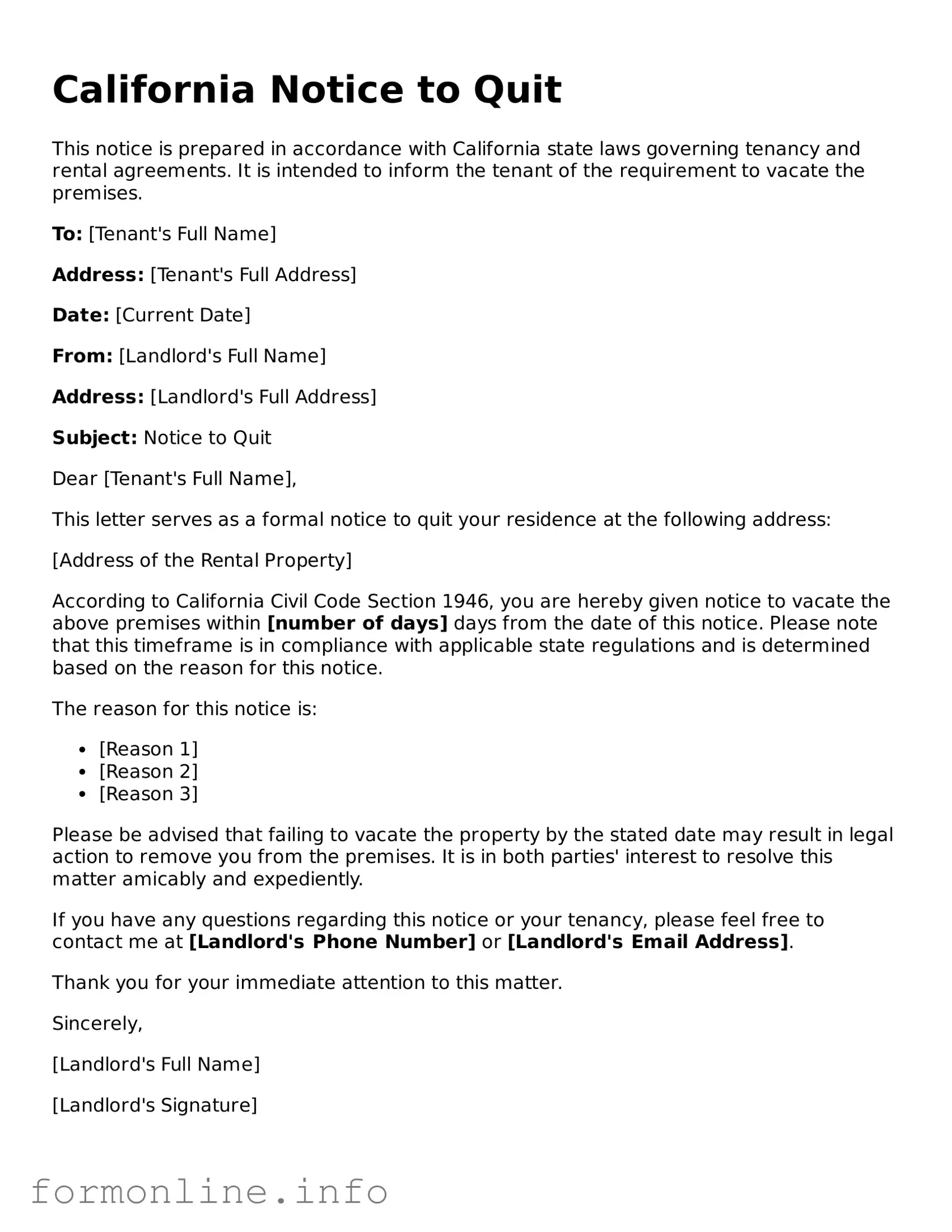California Notice to Quit
This notice is prepared in accordance with California state laws governing tenancy and rental agreements. It is intended to inform the tenant of the requirement to vacate the premises.
To: [Tenant's Full Name]
Address: [Tenant's Full Address]
Date: [Current Date]
From: [Landlord's Full Name]
Address: [Landlord's Full Address]
Subject: Notice to Quit
Dear [Tenant's Full Name],
This letter serves as a formal notice to quit your residence at the following address:
[Address of the Rental Property]
According to California Civil Code Section 1946, you are hereby given notice to vacate the above premises within [number of days] days from the date of this notice. Please note that this timeframe is in compliance with applicable state regulations and is determined based on the reason for this notice.
The reason for this notice is:
- [Reason 1]
- [Reason 2]
- [Reason 3]
Please be advised that failing to vacate the property by the stated date may result in legal action to remove you from the premises. It is in both parties' interest to resolve this matter amicably and expediently.
If you have any questions regarding this notice or your tenancy, please feel free to contact me at [Landlord's Phone Number] or [Landlord's Email Address].
Thank you for your immediate attention to this matter.
Sincerely,
[Landlord's Full Name]
[Landlord's Signature]
